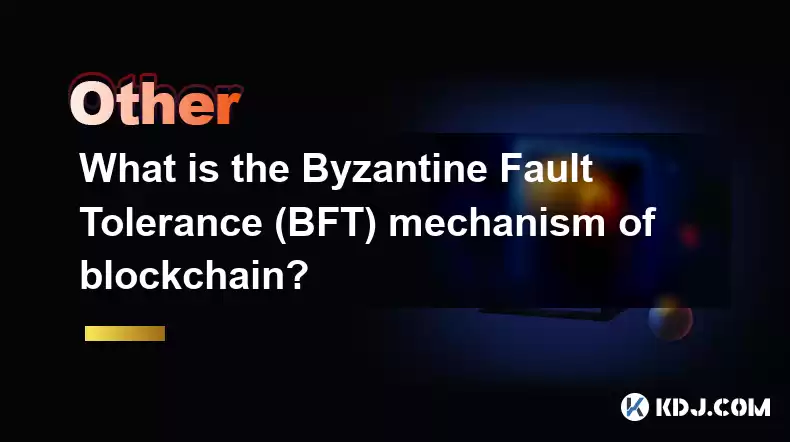-
 Bitcoin
Bitcoin $112400
-1.07% -
 Ethereum
Ethereum $3409
-3.27% -
 XRP
XRP $2.784
-6.60% -
 Tether USDt
Tether USDt $0.9997
-0.03% -
 BNB
BNB $739.3
-2.09% -
 Solana
Solana $158.0
-2.90% -
 USDC
USDC $0.9998
-0.02% -
 TRON
TRON $0.3213
-0.94% -
 Dogecoin
Dogecoin $0.1929
-5.01% -
 Cardano
Cardano $0.6974
-2.82% -
 Hyperliquid
Hyperliquid $36.69
-2.31% -
 Sui
Sui $3.327
-4.80% -
 Stellar
Stellar $0.3672
-5.18% -
 Chainlink
Chainlink $15.65
-3.07% -
 Bitcoin Cash
Bitcoin Cash $525.0
-1.68% -
 Hedera
Hedera $0.2291
-6.00% -
 Avalanche
Avalanche $20.91
-2.96% -
 Ethena USDe
Ethena USDe $1.000
0.00% -
 Toncoin
Toncoin $3.520
-1.12% -
 UNUS SED LEO
UNUS SED LEO $8.968
0.14% -
 Litecoin
Litecoin $105.7
0.26% -
 Shiba Inu
Shiba Inu $0.00001181
-1.79% -
 Polkadot
Polkadot $3.492
-2.08% -
 Uniswap
Uniswap $8.800
-3.10% -
 Dai
Dai $0.9999
-0.01% -
 Monero
Monero $289.9
-3.17% -
 Bitget Token
Bitget Token $4.243
-1.27% -
 Pepe
Pepe $0.00001006
-3.67% -
 Cronos
Cronos $0.1248
-5.68% -
 Aave
Aave $249.7
-2.50%
What is the Byzantine Fault Tolerance (BFT) mechanism of blockchain?
BFT ensures blockchain security by achieving consensus among nodes, even with malicious actors, using algorithms like PoS, PBFT, DPoS, and Tendermint.
Mar 28, 2025 at 09:42 pm

Understanding Byzantine Fault Tolerance in Blockchain
Byzantine Fault Tolerance (BFT) is a crucial mechanism ensuring the reliability and security of blockchain networks, even in the presence of malicious or faulty nodes. It addresses the challenge of maintaining consensus in a distributed system where some participants might behave unpredictably or even deliberately try to sabotage the system. This is particularly important in a decentralized environment like blockchain, where trust is distributed rather than centralized. Understanding BFT is key to grasping how blockchains achieve their security and immutability.
The Byzantine Generals' Problem
The concept of BFT is often explained using the "Byzantine Generals' Problem." Imagine several armies surrounding a city, each commanded by a general. They need to agree on a unified plan of attack (consensus) – either attack or retreat. However, some generals might be traitors (faulty nodes), sending conflicting or misleading messages to disrupt the plan. BFT algorithms aim to solve this problem, allowing the loyal generals to reach a consensus even if some are traitors.
How BFT Works in Blockchain
BFT in blockchain relies on cryptographic consensus algorithms to achieve agreement among nodes. These algorithms ensure that even if a significant portion of the network is compromised, the honest nodes can still reach a consensus on the valid state of the blockchain. Different blockchains utilize different BFT algorithms, each with its strengths and weaknesses.
Proof-of-Stake (PoS): This algorithm allows validators to propose and verify blocks based on the amount of cryptocurrency they stake. The more cryptocurrency staked, the higher the probability of being selected to validate a block. Malicious actors are less likely to attack because they risk losing their staked cryptocurrency.
Practical Byzantine Fault Tolerance (PBFT): PBFT is a classic BFT algorithm that employs a primary node to manage consensus. This primary node proposes blocks, and other nodes verify and vote on their validity. If the primary node fails, a new one is elected. However, PBFT's scalability is limited, making it less suitable for large-scale public blockchains.
Delegated Proof-of-Stake (DPoS): DPoS is a variation of PoS where token holders elect delegates to validate transactions and propose blocks. This approach improves efficiency and scalability compared to pure PoS, but it can also lead to centralization if a small number of delegates control a large portion of the network.
Tendermint: This is a BFT algorithm designed for high throughput and scalability. It uses a deterministic consensus mechanism, meaning that given the same input, all honest nodes will reach the same output. This makes it suitable for applications requiring fast and reliable consensus.
The Importance of Consensus Mechanisms
The selection of an appropriate BFT algorithm is crucial for a blockchain's success. The chosen algorithm directly impacts the network's security, scalability, and efficiency. A robust BFT algorithm is essential for maintaining the integrity and trust of the blockchain. Without a reliable BFT mechanism, the blockchain would be vulnerable to attacks and manipulation, potentially rendering it useless. The choice of algorithm is often a balance between security, scalability, and energy efficiency.
Security Implications of BFT Algorithms
The security provided by BFT algorithms is dependent on several factors, including the algorithm itself, the implementation, and the network's overall health. A well-designed and properly implemented BFT algorithm can significantly increase the resilience of a blockchain network against attacks. However, even robust algorithms can be vulnerable if the network has insufficient participation or if there are significant vulnerabilities in the underlying code.
Understanding the limitations of each BFT algorithm is vital for developers and users alike. For instance, while PBFT offers strong security guarantees, its scalability limitations restrict its use in large-scale public blockchains. Conversely, PoS-based algorithms offer better scalability but can be vulnerable to attacks if a sufficiently large stake is controlled by malicious actors.
The continuous evolution of BFT algorithms is a testament to the ongoing research and development within the blockchain space. New algorithms are constantly being proposed and implemented, aiming to improve efficiency, security, and scalability. Staying informed about the latest advancements is crucial for anyone involved in the blockchain ecosystem.
The Role of Nodes in BFT
The nodes participating in a blockchain network are fundamental to the effectiveness of any BFT algorithm. Each node plays a crucial role in verifying transactions, proposing blocks, and reaching consensus. The distribution of nodes across different geographical locations enhances resilience against attacks and censorship. The more nodes participating honestly, the more secure and robust the network becomes.
The integrity of the nodes is paramount to the success of BFT. Malicious or compromised nodes can attempt to disrupt the consensus process, potentially leading to the creation of conflicting blockchains or the acceptance of invalid transactions. Therefore, mechanisms to identify and isolate malicious nodes are critical for maintaining the integrity of the system.
Future of BFT in Blockchain
The field of BFT algorithms is constantly evolving. Researchers are actively working on developing new algorithms that are more efficient, secure, and scalable. The focus is on creating algorithms that can handle the increasing demands of blockchain networks while maintaining the integrity and security of the system. This includes exploring hybrid approaches that combine different BFT mechanisms to leverage their respective strengths.
Frequently Asked Questions
Q: What is the difference between Proof-of-Work (PoW) and Byzantine Fault Tolerance (BFT)?
A: PoW relies on computational power to secure the network, while BFT uses consensus algorithms to reach agreement among nodes, even in the presence of faulty nodes. PoW is energy-intensive, whereas many BFT algorithms are more energy-efficient.
Q: Can a blockchain be secure without BFT?
A: While not all blockchains explicitly implement BFT algorithms in the same way, some form of consensus mechanism is essential for security. Without a mechanism to ensure agreement on the valid state of the blockchain, the system would be vulnerable to attacks and manipulation.
Q: Which BFT algorithm is the best?
A: There is no single "best" BFT algorithm. The optimal choice depends on the specific requirements of the blockchain network, such as scalability, security needs, and energy efficiency. Different algorithms offer different trade-offs.
Q: How does BFT address the double-spending problem?
A: BFT algorithms help prevent double-spending by ensuring that only one valid version of the transaction history is accepted by the network. By reaching consensus on the order of transactions, BFT prevents malicious actors from spending the same cryptocurrency twice.
Q: Is BFT susceptible to 51% attacks?
A: While BFT algorithms significantly improve resistance to attacks, they are not entirely immune to 51% attacks. If a malicious actor controls more than 50% of the network's resources (e.g., staked cryptocurrency in PoS), they could potentially manipulate the consensus process. However, the threshold for a successful attack is often higher with BFT compared to PoW.
Disclaimer:info@kdj.com
The information provided is not trading advice. kdj.com does not assume any responsibility for any investments made based on the information provided in this article. Cryptocurrencies are highly volatile and it is highly recommended that you invest with caution after thorough research!
If you believe that the content used on this website infringes your copyright, please contact us immediately (info@kdj.com) and we will delete it promptly.
- Crypto, Phishing, and Your Wallet: A New Yorker's Guide to Staying Safe
- 2025-08-03 10:30:16
- Troller Cat Meme Coin Presale Soars: A New King in the Crypto Jungle?
- 2025-08-03 10:30:16
- Grayscale, Altcoin Trust, and Mid-Cap Mania: What's the Deal?
- 2025-08-03 08:50:16
- XRP, ADA, and the Altcoin Evolution: What's Hot and What's Next
- 2025-08-03 08:30:16
- Altcoins, Bitcoin, and Inflows: Decoding the Crypto Current
- 2025-08-03 09:30:16
- HBAR Price Check: Will Monthly Gains Hold at This Resistance Level?
- 2025-08-03 08:30:16
Related knowledge

What is the difference between on-chain and off-chain transactions?
Aug 02,2025 at 04:22pm
Understanding On-Chain TransactionsOn-chain transactions refer to digital asset transfers that are recorded directly on a blockchain ledger. These tra...

What is the double-spending problem and how does blockchain prevent it?
Aug 02,2025 at 01:07pm
Understanding the Double-Spending ProblemThe double-spending problem is a fundamental challenge in digital currency systems where the same digital tok...

What is the difference between a blockchain and a database?
Aug 01,2025 at 09:36pm
Understanding the Core Structure of a BlockchainA blockchain is a decentralized digital ledger that records data in a series of immutable blocks linke...

How does blockchain handle scalability?
Aug 02,2025 at 02:58pm
Understanding Blockchain Scalability ChallengesBlockchain scalability refers to a network's ability to handle an increasing volume of transactions wit...

What are the different types of blockchains?
Aug 03,2025 at 03:01am
Public Blockchains: Open and Decentralized NetworksPublic blockchains are the most widely recognized type of blockchain, characterized by their open a...

What is a hash in a blockchain?
Aug 02,2025 at 05:28am
Understanding the Concept of Hash in BlockchainA hash in the context of blockchain technology refers to a unique digital fingerprint generated by a cr...

What is the difference between on-chain and off-chain transactions?
Aug 02,2025 at 04:22pm
Understanding On-Chain TransactionsOn-chain transactions refer to digital asset transfers that are recorded directly on a blockchain ledger. These tra...

What is the double-spending problem and how does blockchain prevent it?
Aug 02,2025 at 01:07pm
Understanding the Double-Spending ProblemThe double-spending problem is a fundamental challenge in digital currency systems where the same digital tok...

What is the difference between a blockchain and a database?
Aug 01,2025 at 09:36pm
Understanding the Core Structure of a BlockchainA blockchain is a decentralized digital ledger that records data in a series of immutable blocks linke...

How does blockchain handle scalability?
Aug 02,2025 at 02:58pm
Understanding Blockchain Scalability ChallengesBlockchain scalability refers to a network's ability to handle an increasing volume of transactions wit...

What are the different types of blockchains?
Aug 03,2025 at 03:01am
Public Blockchains: Open and Decentralized NetworksPublic blockchains are the most widely recognized type of blockchain, characterized by their open a...

What is a hash in a blockchain?
Aug 02,2025 at 05:28am
Understanding the Concept of Hash in BlockchainA hash in the context of blockchain technology refers to a unique digital fingerprint generated by a cr...
See all articles

























































































